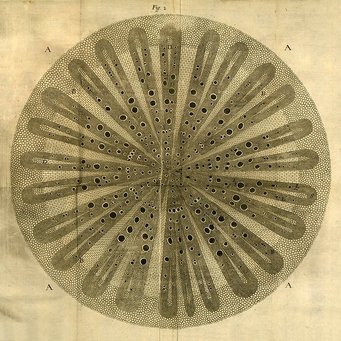Microscope/Macrocosm: Early Modern Technology, Visualization and Representations of Nature

My dissertation research is on visual epistemology and representations of nature in the seventeenth century, which was a time that saw the earliest systematic considerations of the world using new technologies of vision that allowed people to see beyond the normal constraints of the unaided eye. I focus in on the role of the microscope in giving rise to new perceptions of the world and the ways in which those discoveries were supported by visualizations that were exchanged throughout intellectual communities across Europe in the form of books and letters. Within the small community of natural philosophers conducting microscopic research in the late seventeenth century, two figures in particular exemplify the processes of discovery, representation and dissemination that were unfolding as both a collaborative and a competitive community enterprise. Nehemiah Grew (1641–1712) and Marcello Malpighi (1628–1694) were both commissioned by the Royal Society for the same task: documenting their observations of plant life as seen through a microscope. After the near simultaneous presentation of each of their works on plant anatomy to the Society in 1672, the two men corresponded regularly and shared their observations through letters and publications facilitated by their connection with the Royal Society. Accompanying their observations were careful visual representations of the vessels and membranes uncovered through experimentation and the delicate procedures of dissection and close looking. Although the two men were using similar technologies and drawing on an established corpus of natural history investigations, their findings were not always the same, nor were their choices for visualizing the new minuscule spaces they found. My work at the Bibliotheca Hertziana will consist of comparing these early illustrations of microscopic plant life as epistemological documents - as instantiations of a developing understanding of the natural world that was intimately connected to new forms of investigation, seeing and knowing.
